Embedded World 2025: Day 3
on

We were live from embedded world 2025, Day 3! Elektor brought you the latest breakthroughs, must-see demos, and industry updates straight from the event. Check out the following helpful insights.
Update: March 13 at 18:00 — The Elektor Team
That wraps up our coverage from embedded world 2025. Thank you to everyone who followed along, shared insights, and contributed to the discussions.
Looking forward to seeing you all again next year!
Update: March 13 at 16:00 — Jean-François Simon
STMicroelectronics
ST’s massive booth is packed with sub-stands showcasing new products, including NFC readers, smart NVM for battery-powered applications, current sensors, time-of-flight sensors, and much more. The key focus this year is on new microcontrollers, particularly the STM32C0 series, designed with ample Flash memory for graphical interfaces. Connectivity options include a built-in USB (STM32C071) and a built-in CAN (STM32C092). Apart from the C0 series, their full lineup is extensive, ranging from the minimalist STM32U3 to the high-end STM32N6. There were really neat demos, including a time-of-flight sensor for gesture recognition and the ST E-Design Suite, a free online tool for designing power converters.
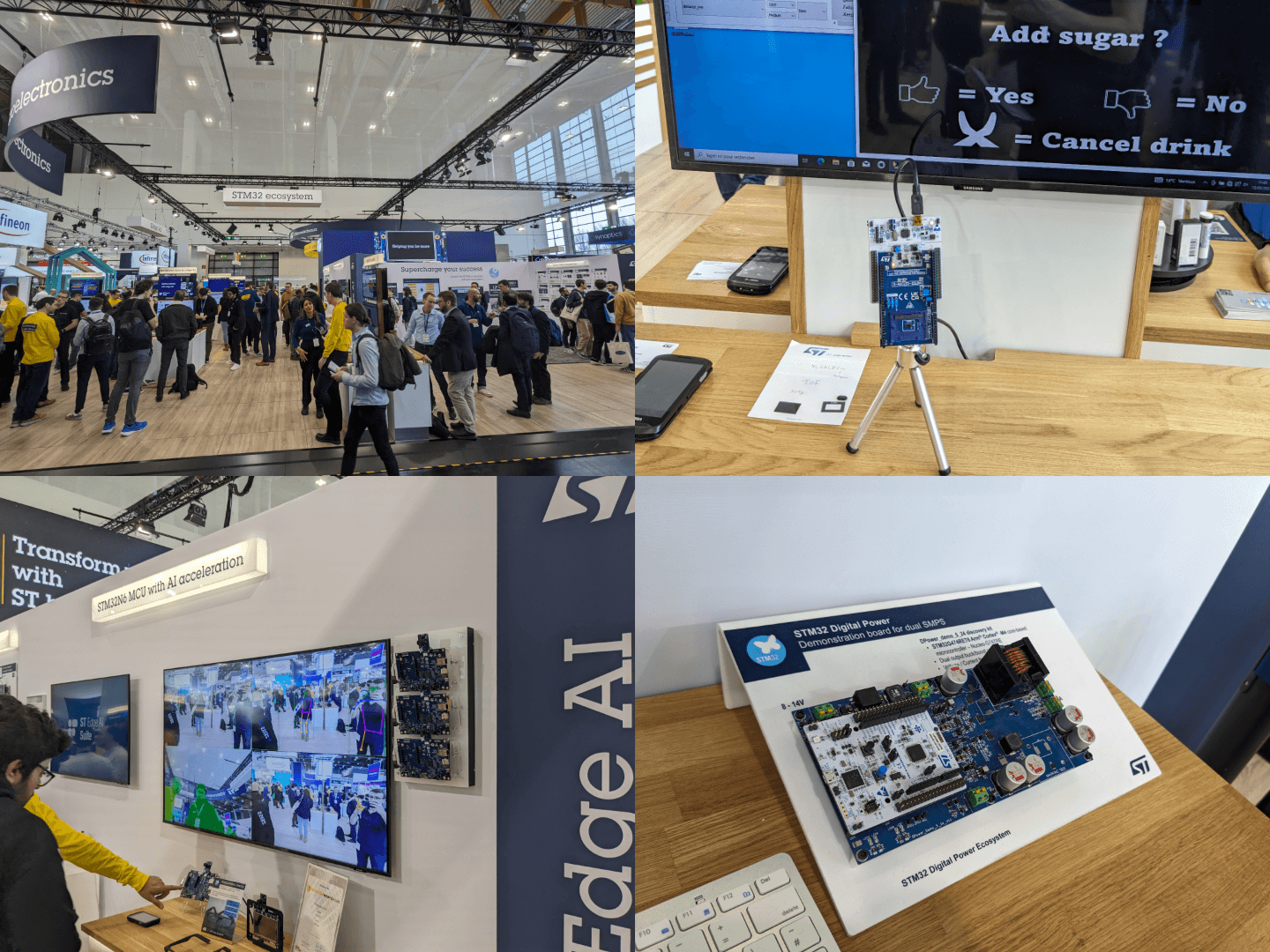
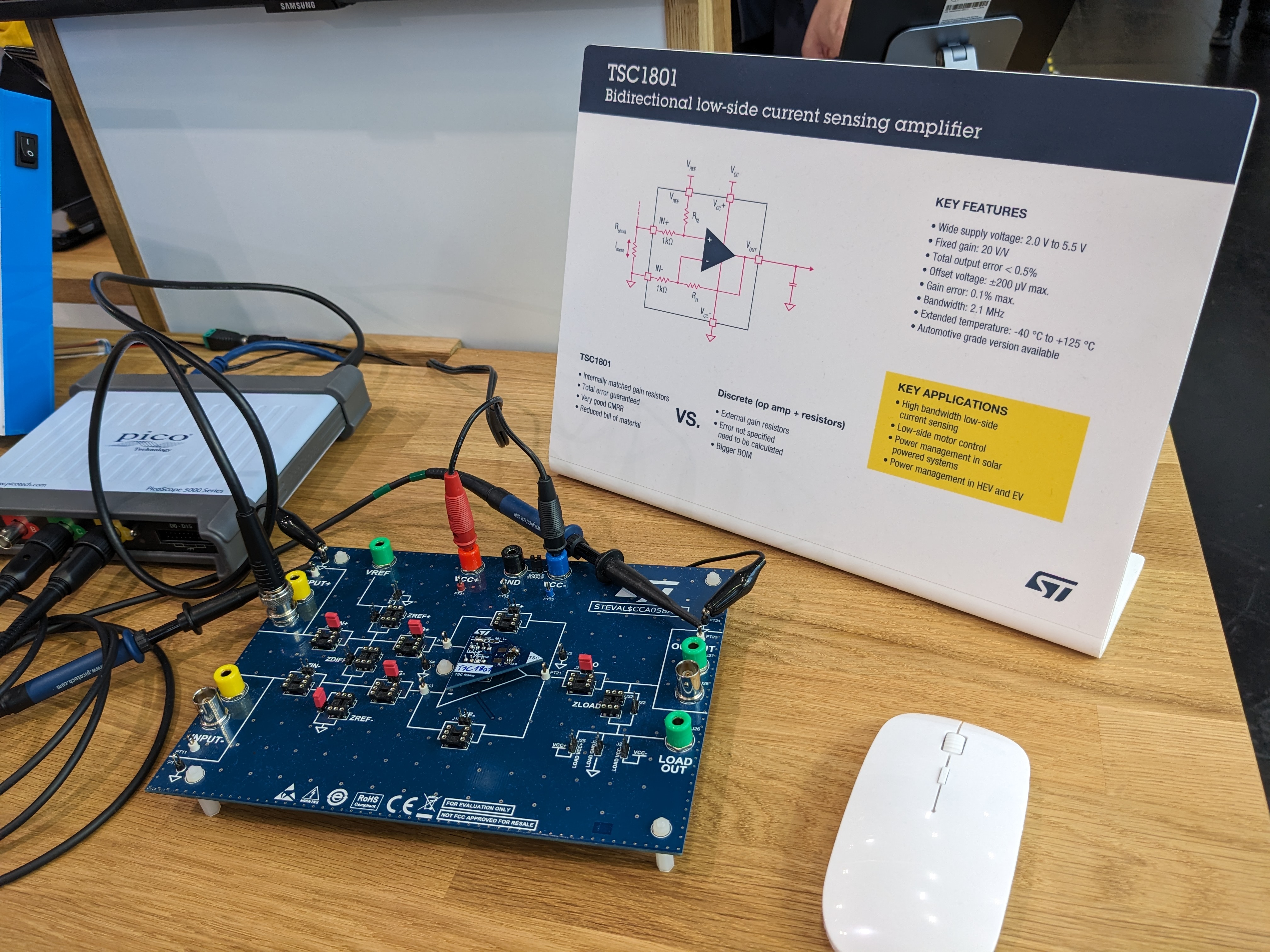
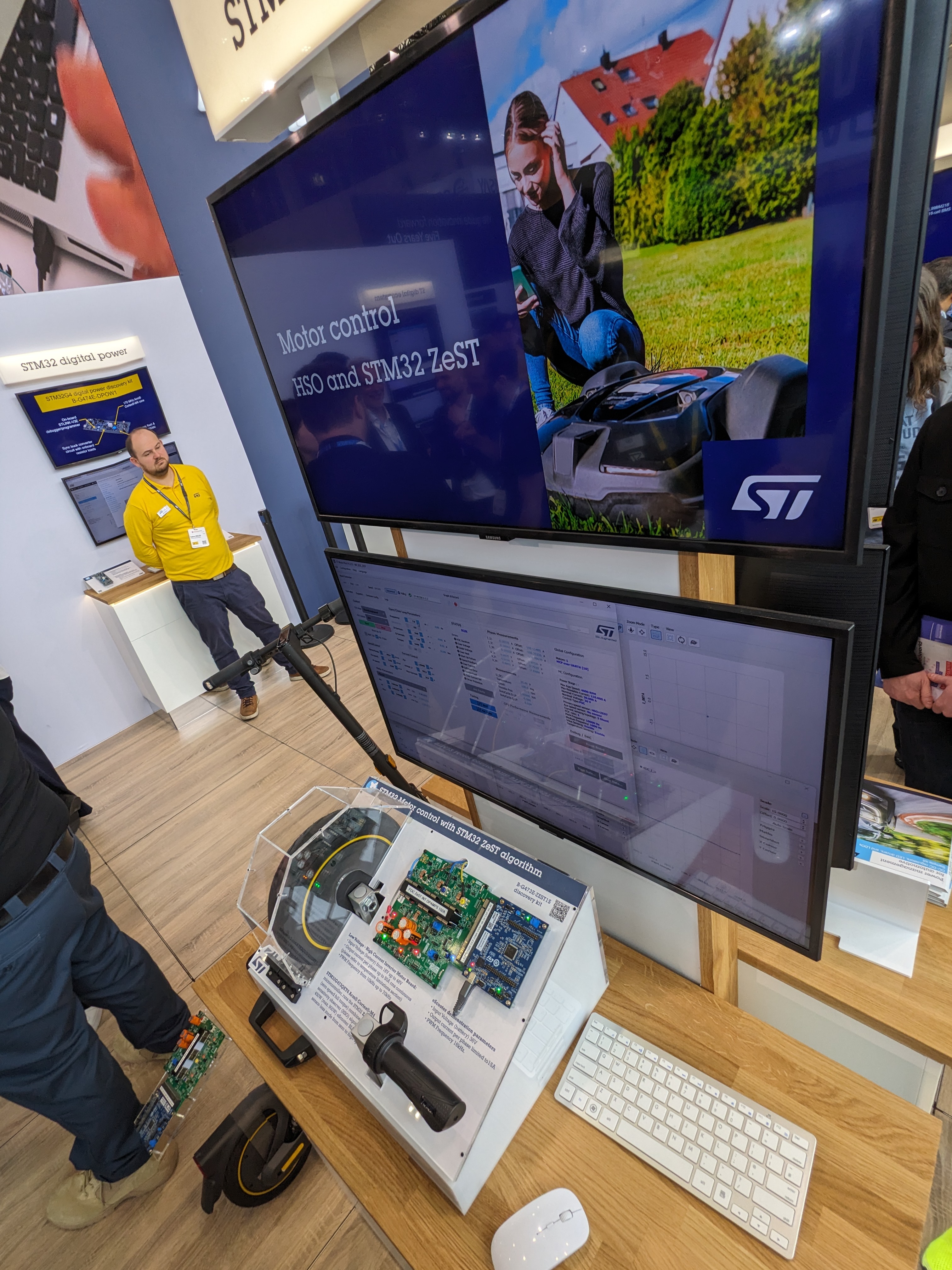
Lattice Semiconductor
Lattice continues to focus on increasingly powerful devices, beyond its traditional low-power FPGA market. A key highlight is the Avant X70, which, despite being classified by Lattice as “mid-range” compared to competitors, boasts 600,000 LUTs and 25 Gbps interfaces, here demonstrated in a 5G base station application. Image recognition and factory automation are also prominent themes. As usual, many Lattice partners, who use their products for specific projects, are present at the booth. A notable example is Secure-IC, a French company working on post-quantum cryptography—designed to withstand future attacks of “traditional” cryptography algorithms by quantum computers when they finally hit the market.

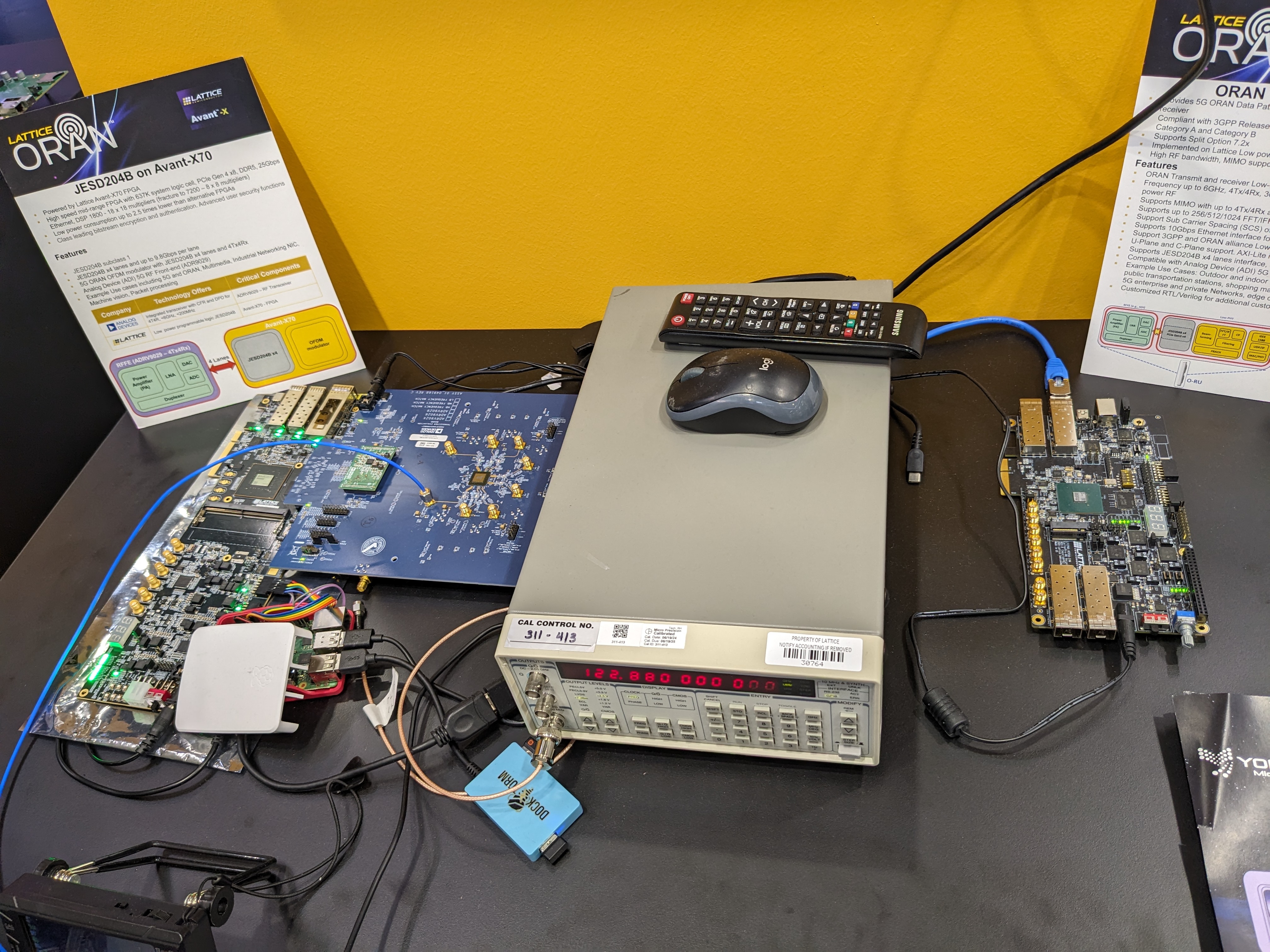
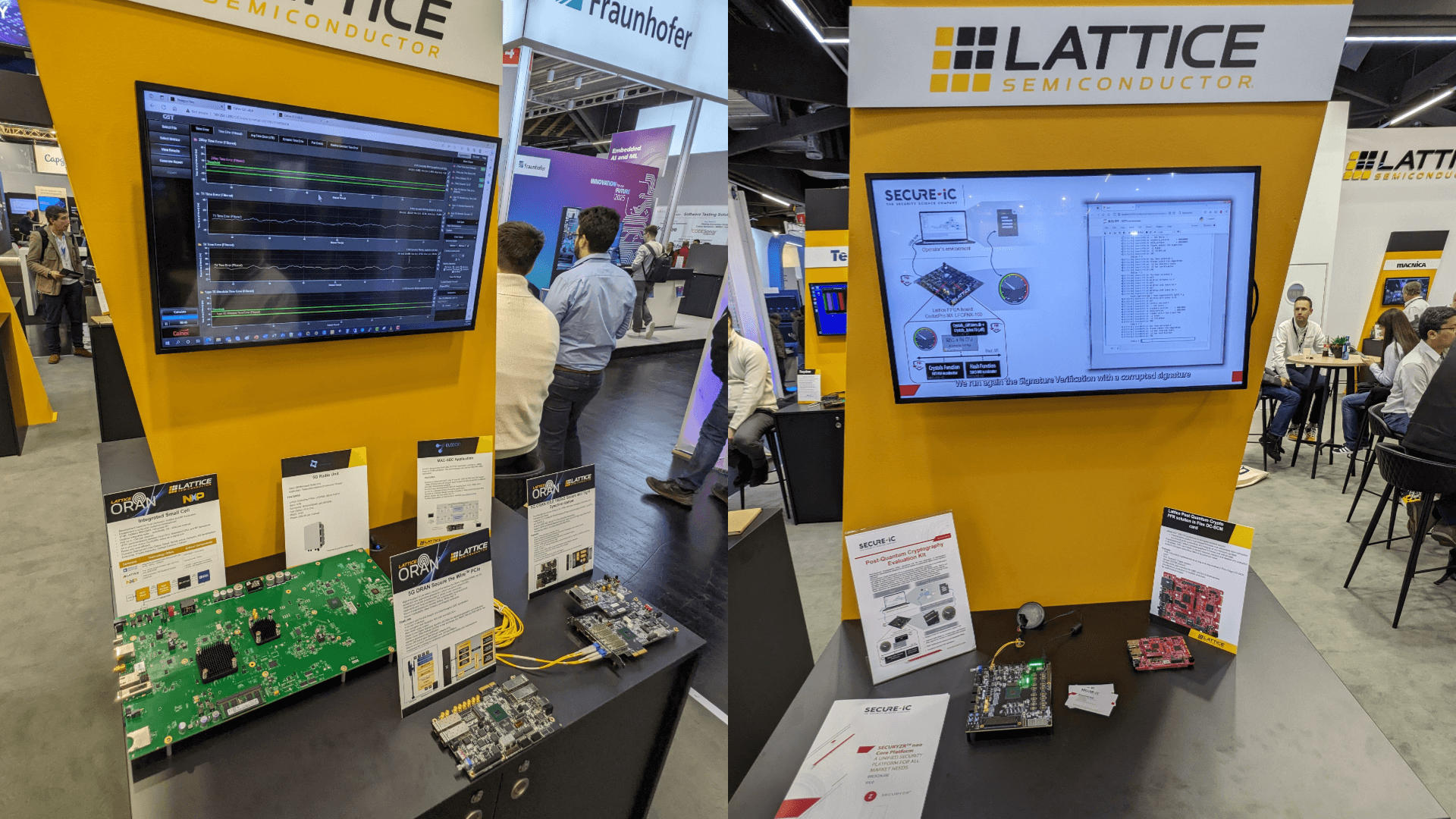
M5Stack
Next to the Espressif booth, M5Stack is showcasing its modular, colorful, and stackable development kits for rapid prototyping and product development. Among the new additions is the Unit C6L, featuring an ESP32C6 and an SX1262 transceiver for LoRa connectivity. Other notable offerings include the "CardComputer" and the StamPLC, a compact PLC system that allows for flexible expansion using interchangeable connectivity "stamps."
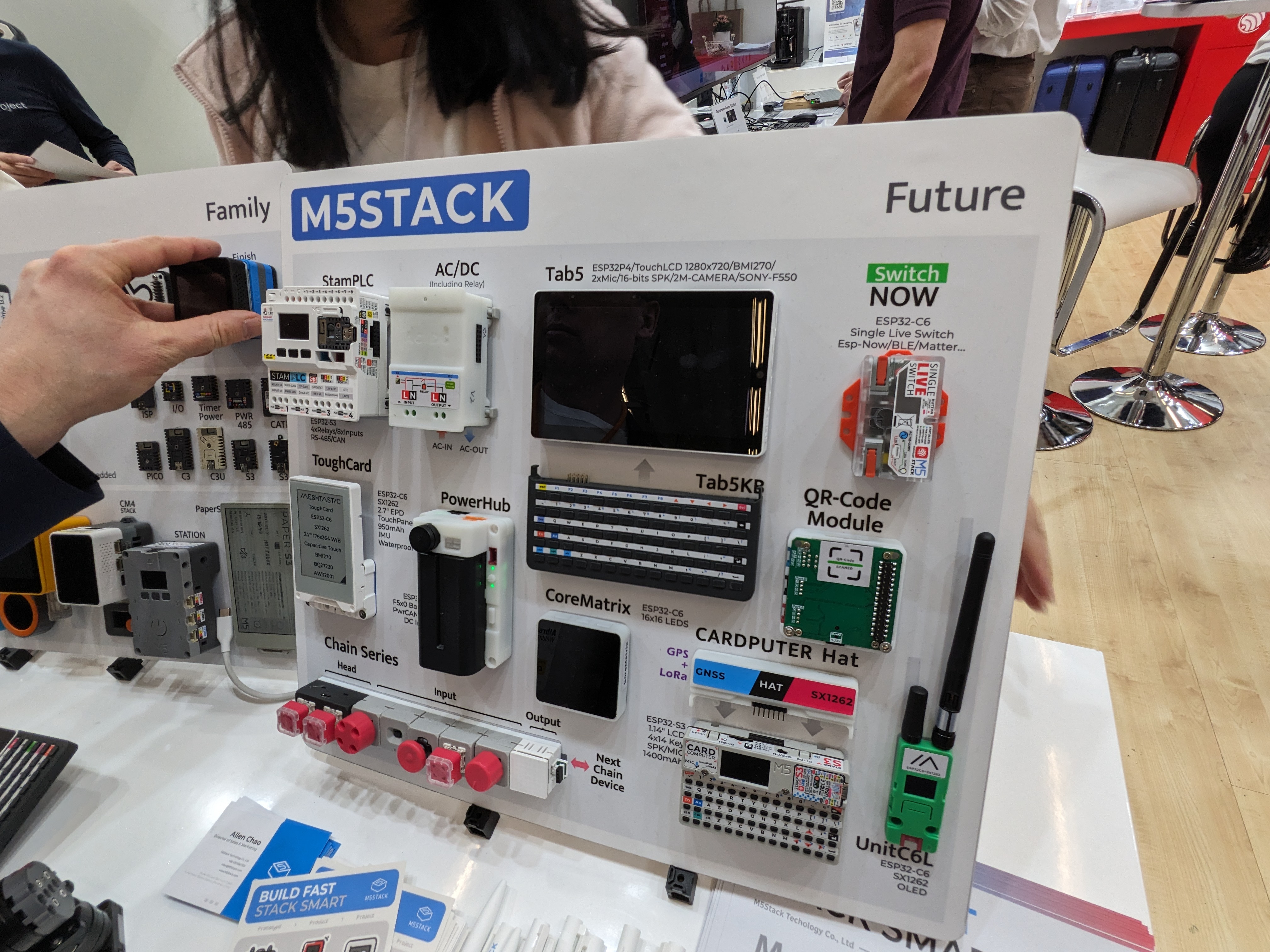
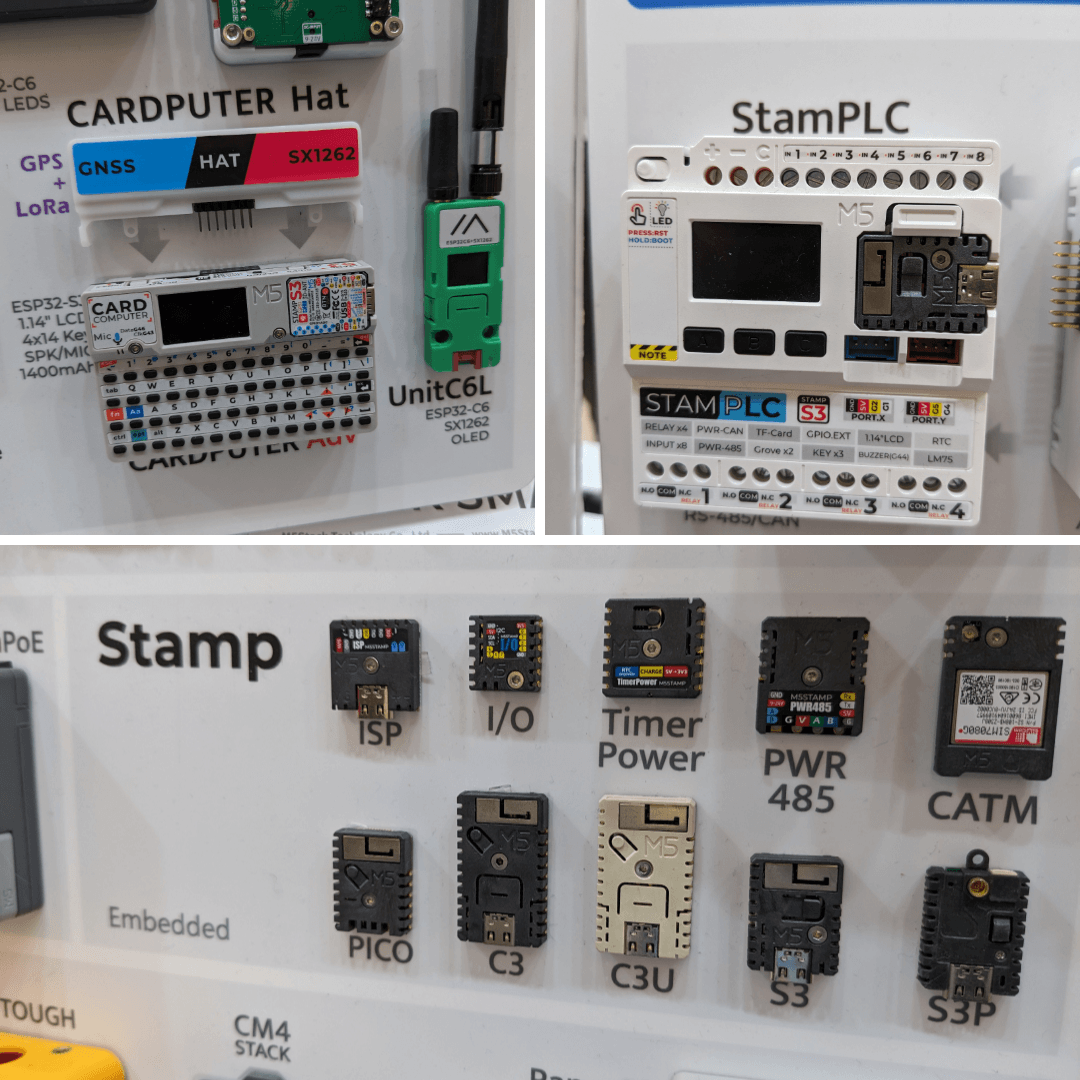
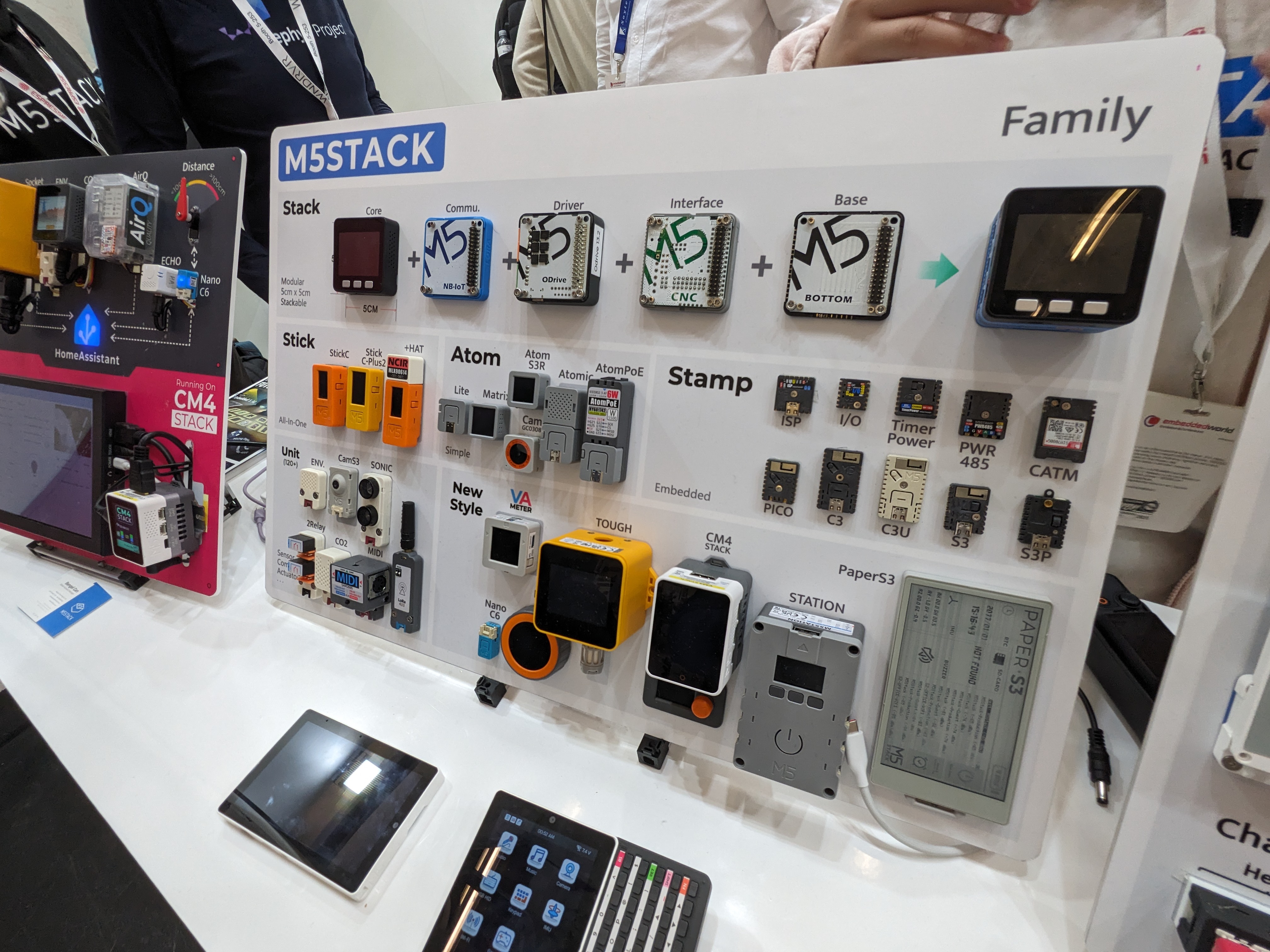
Update: March 13 at 14:50 — Jens Nickel
Microchip showcased an automation demo where smaller and larger microcontrollers communicate seamlessly via Single Pair Ethernet. Single Pair Ethernet is an alternative to CAN bus, requiring only two wires and screw clamps instead of standard Ethernet connectors and cables. It supports a range of up to 50 meters and a data rate of 10 Mbps. The standard also allows for powering devices through the same two wires.
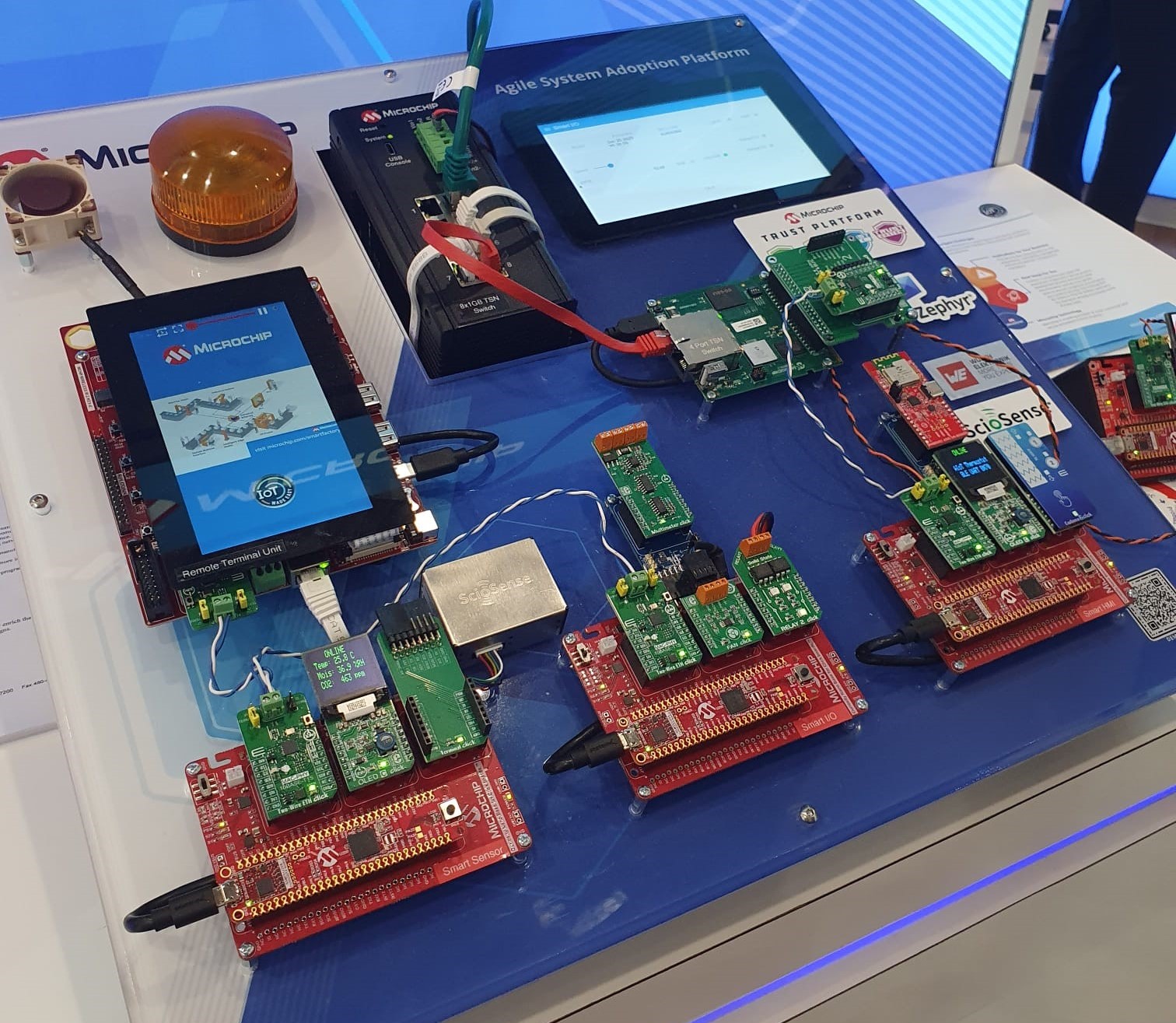
Update: March 13 at 14:00 — Brian Tristam Williams
Even on the last day of embedded world 2025, NXP’s FRDM board section was still busy. Engineers and students crowded around the latest FRDM-K32L3A6 and FRDM-MCX boards, testing their low-power performance and real-time processing. NXP staff answered questions as attendees tried the final demos, showing strong interest in these prototyping tools right until the end of the event.
Update: March 13 at 13:23 — Jens Nickel
Electrochromic sunglasses are on display at the company ONESEC Eyewear. They feature a photoresistive chip, which detects bright light and triggers the liquid crystal to darken the lenses in about one second.
I tested the sunglasses myself, and they change from light to dark really fast. However, it might take some time for people to get used to using them comfortably every day.
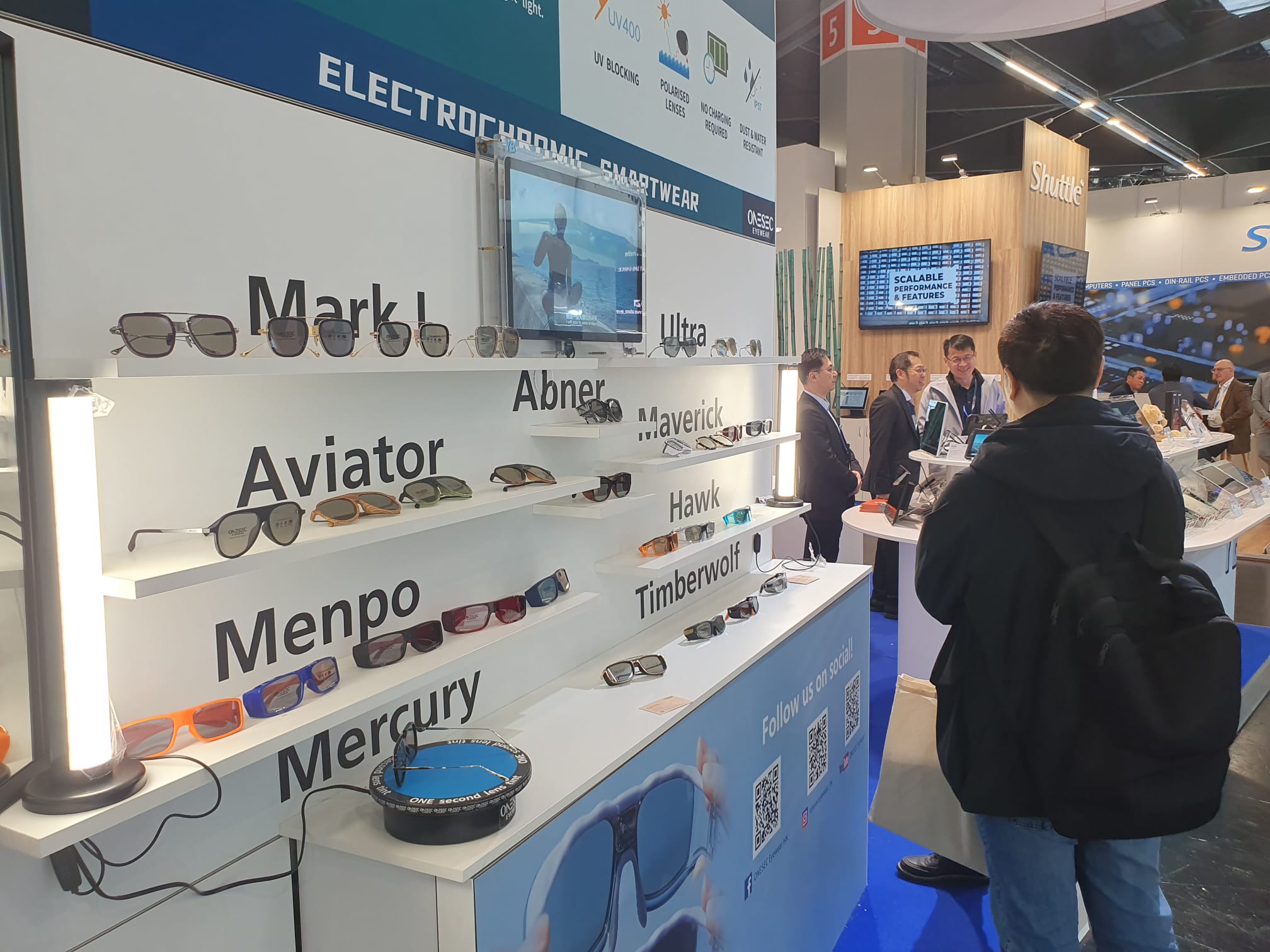
Update: March 13 at 13:23 — Jens Nickel
WIZnet, a familiar name to many Elektor readers, is showcasing new products, including an evaluation board with a WIZnet module and a Raspberry Pi Pico.
They are also displaying all-in-one modules that integrate an W5500 Ethernet controller directly into the Ethernet connector. All you have to do is mount these modules, supply power, and control via a UART interface, simplifying integration.
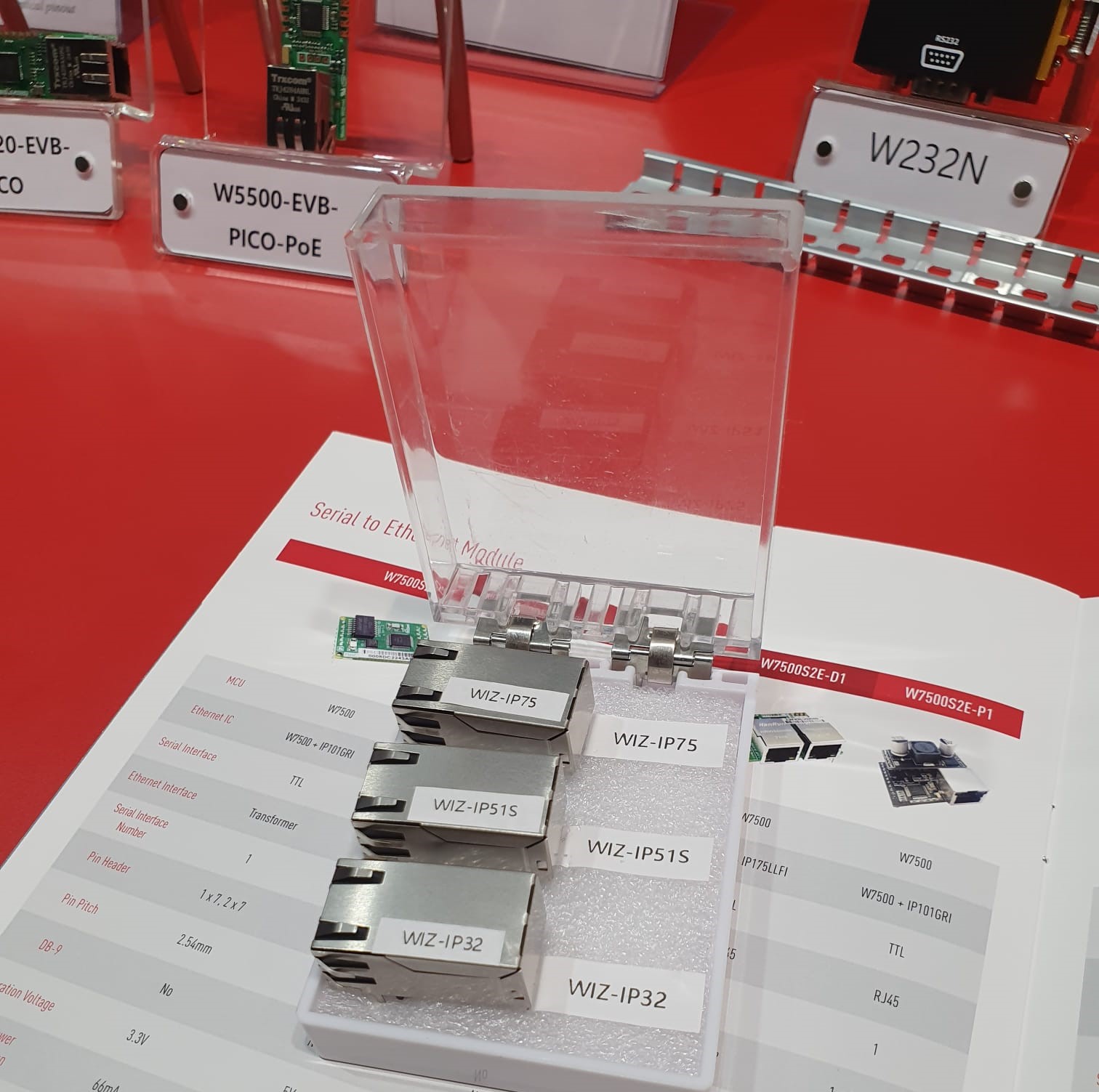
Update: March 13 at 12:38 — Jens Nickel
STMicroelectronics, as part of the tradition, has a large booth where various companies using their microcontrollers are presenting their solutions. It goes without saying that many of the demos focus on AI, with some running on the STM32N6, which includes AI acceleration.
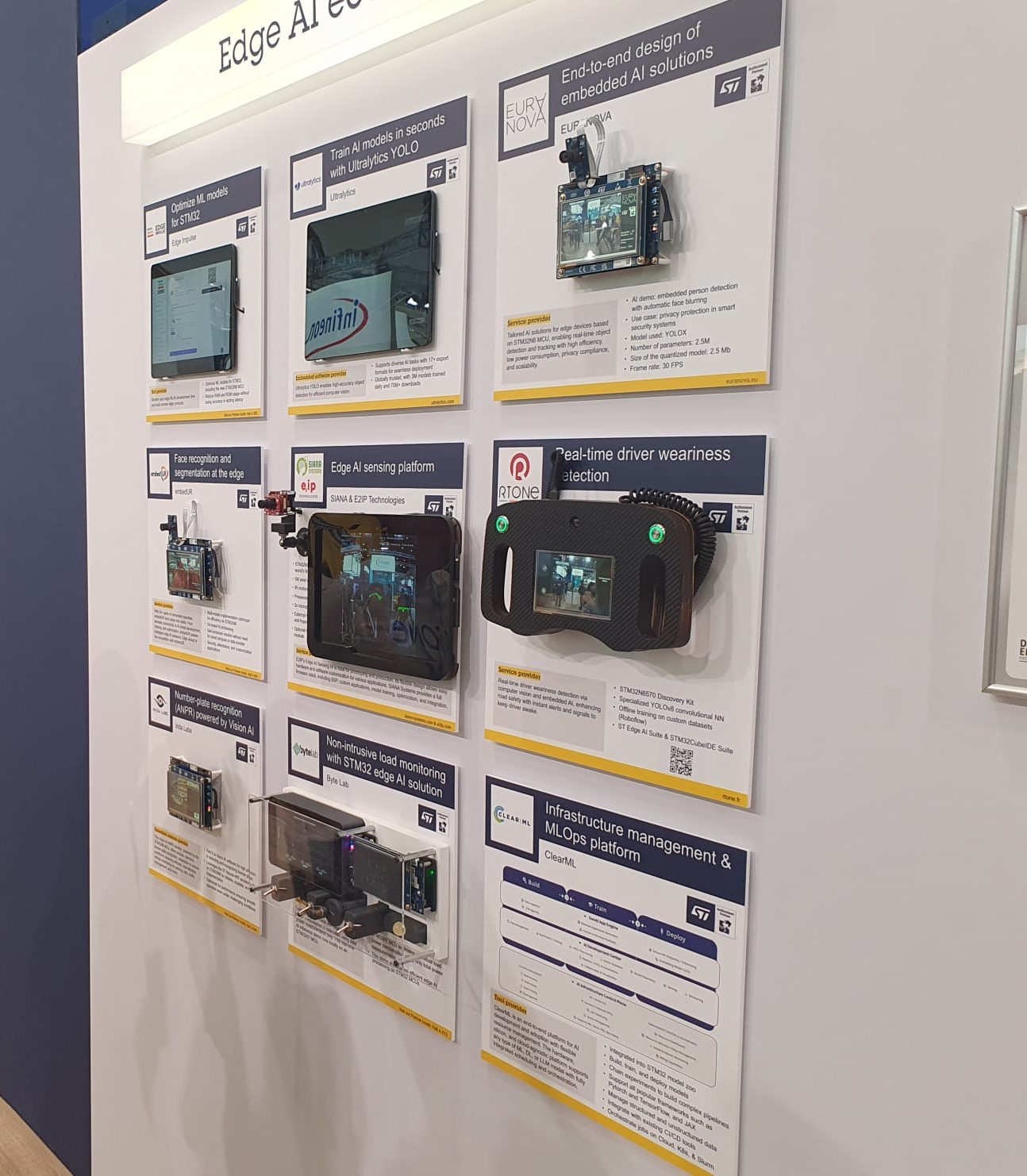
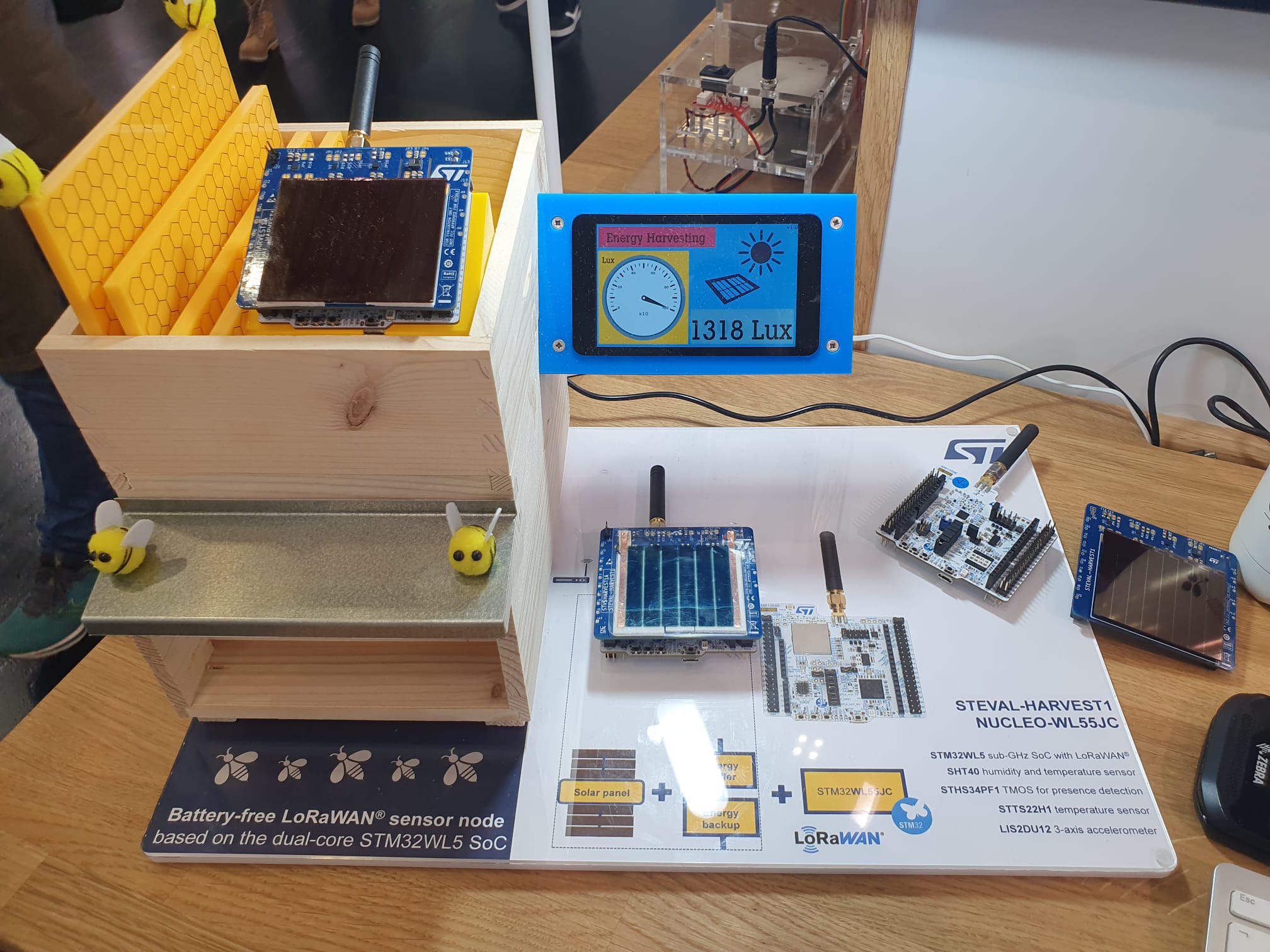
Update: March 13 at 11:15 — Roberto Armani
After a busy round of business meetings, there’s finally time to explore the pavilions from embedded world 2025 in search of standout technologies.
Sykno
This is a very active startup specializing in RF technologies located in Hall 2, Booth 639e. It presents a 60 GHz MIMO Radar evaluation system with two transmission and four reception channels. A key feature is the modular antenna setup, which can be dismantled and organized with different 3D-printed waveguides to match different testing needs. A small masterpiece, based on the Infineon BGT60ATR24C and comes with a Python-based plug-and-play GUI to speed up R&D and testing.
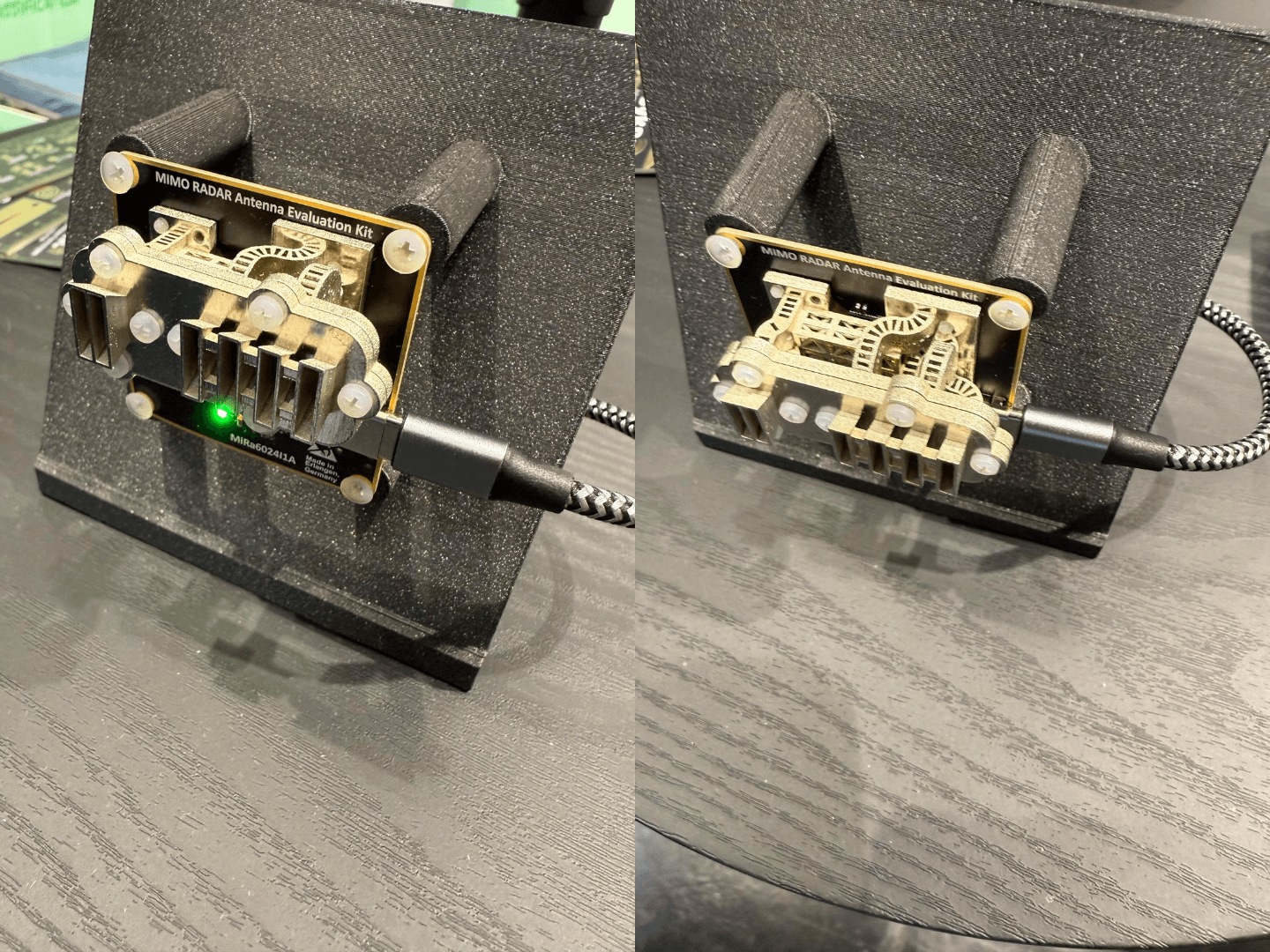
Sykno also specializes in monitoring vital signs using radar detection. As you can see in the photos, the system is capable of detecting pulse and heart sounds from below, without direct contact or wiring on the patient.
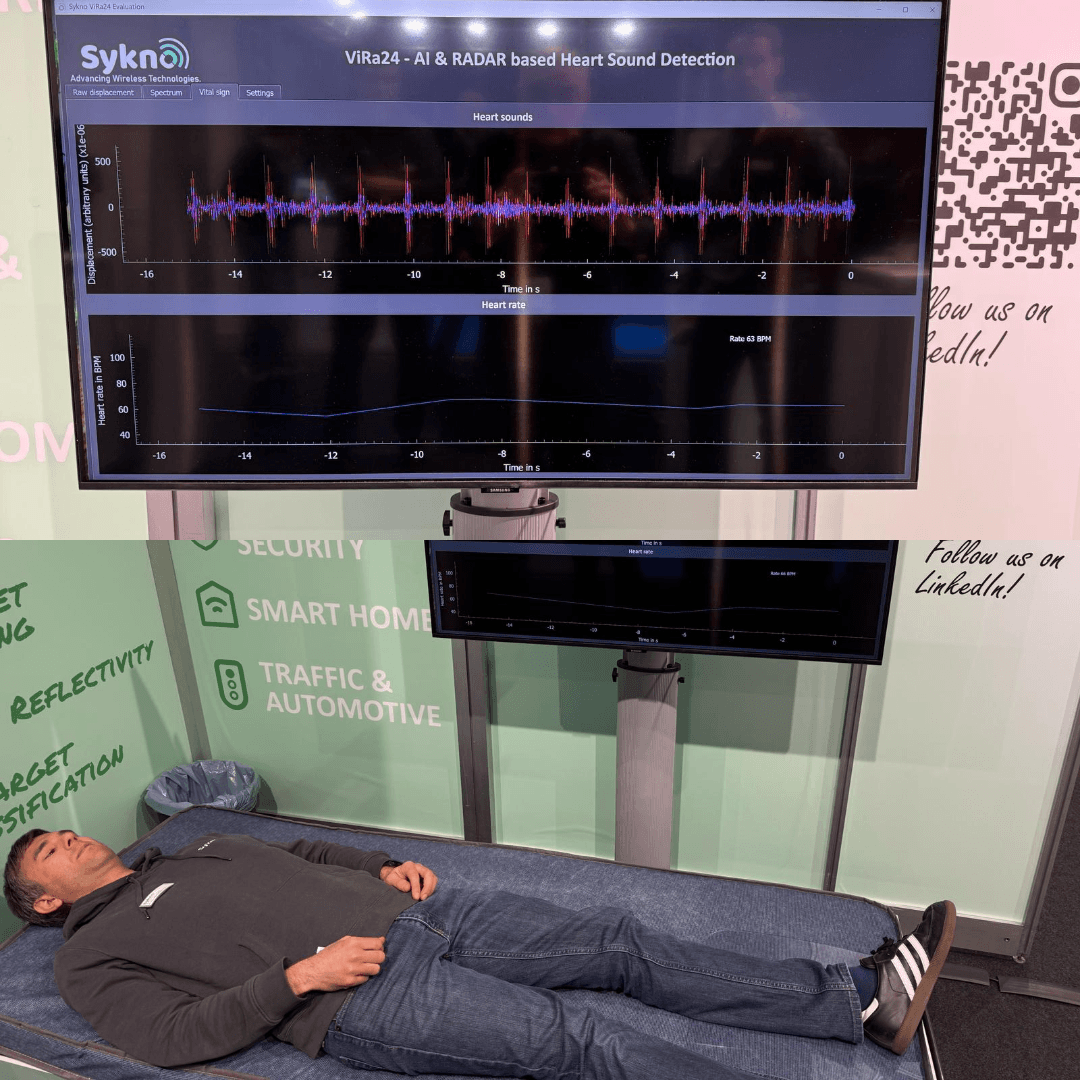
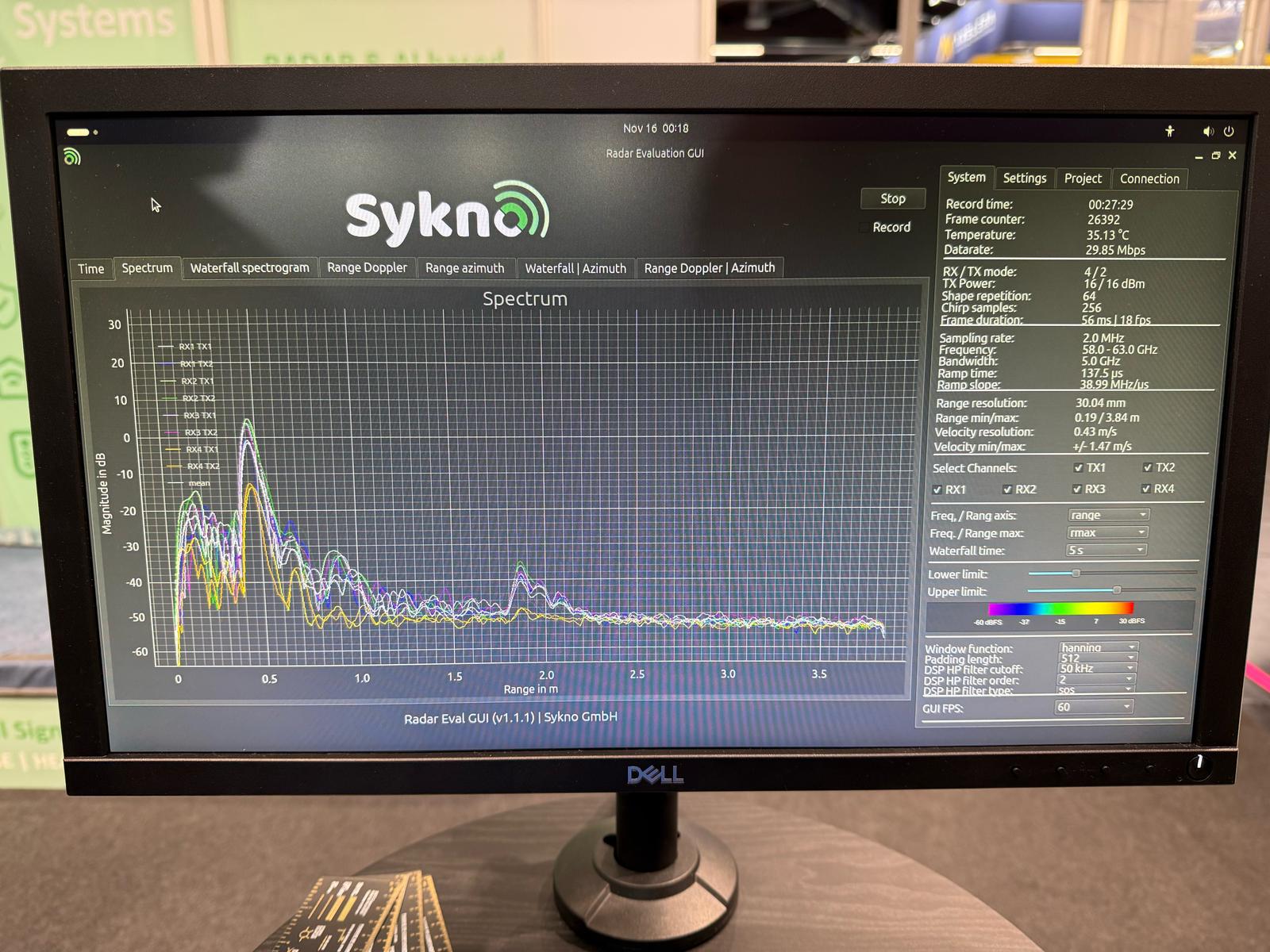
ai-coustics
AI can be of great help in digital audio processing for noise suppression. This is exactly what ai|coustics does. Their solution is available both as an online processing service and as an SDK that can be integrated into user applications. The demo is available in Hall 2, Booth Number 637h.
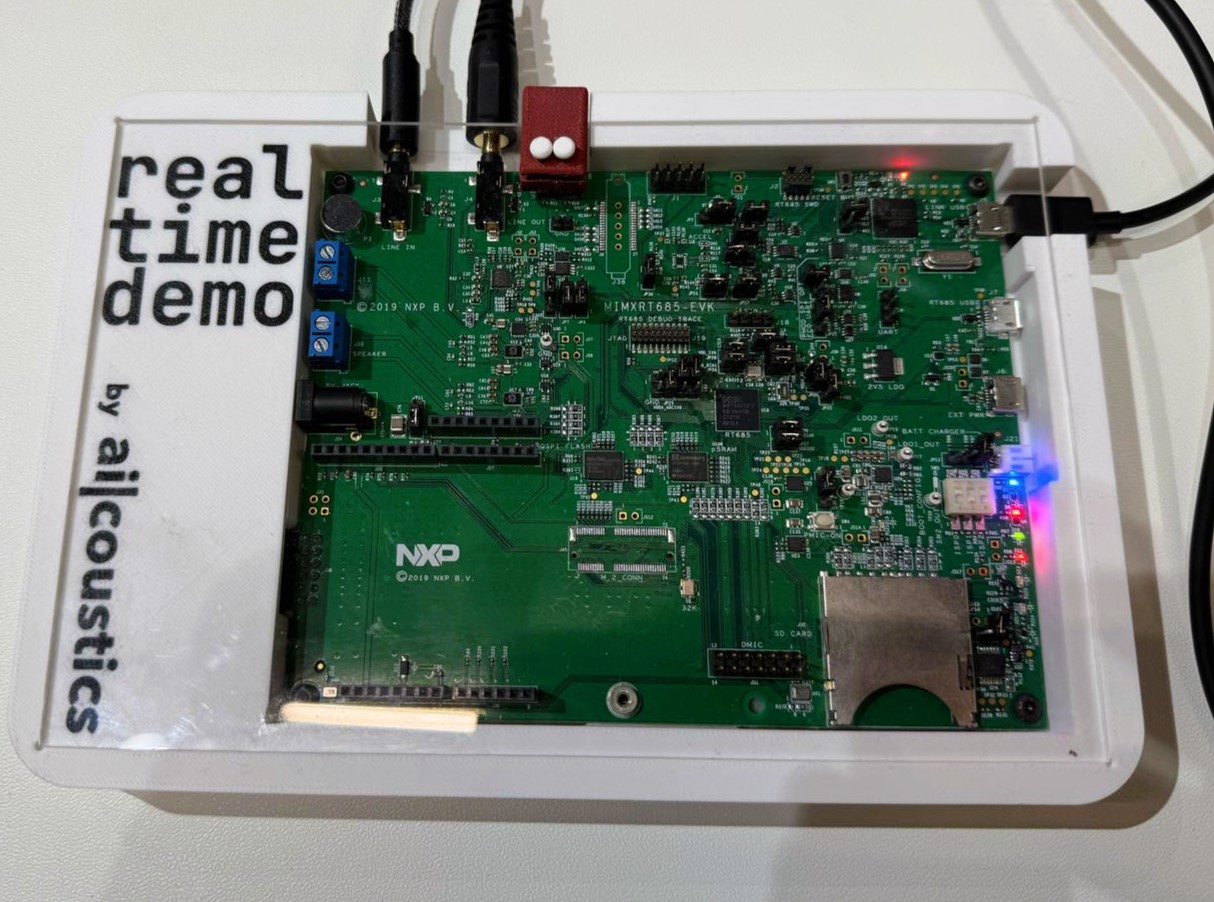
Update: March 13 at 10:30 — Jens Nickel
We are back on the final day of embedded world 2025, wrapping up the latest insights and innovations from the exhibition floor.
Holo Touch
Distributor and solution provider Hy-Line (Hall 1, Booth 578) is showcasing the Holo display. The image appears to float in front of the screen, and touch interactions are registered via an infrared touch sensor positioned below the virtual image. The holographic effect is created by passing the image from a standard display through a specialized holographic plate, which redirects and focuses the light to form a virtual image in space.
Wheel on Display
Another display innovation comes from Data Modul (Hall 1, Booth 368), called "Wheel on Display". They are showcasing a glass display where users receive haptic feedback through a wheel placed on the touch interface.
The wheel works as a rotary encoder and also detects button presses without the need to break through the glass. There is no mounted display — the wheel is simply placed on the touch screen. However, according to the company, a special touch controller is required for this setup, which Data Modul also provides. Up to four wheels on a single display are possible.
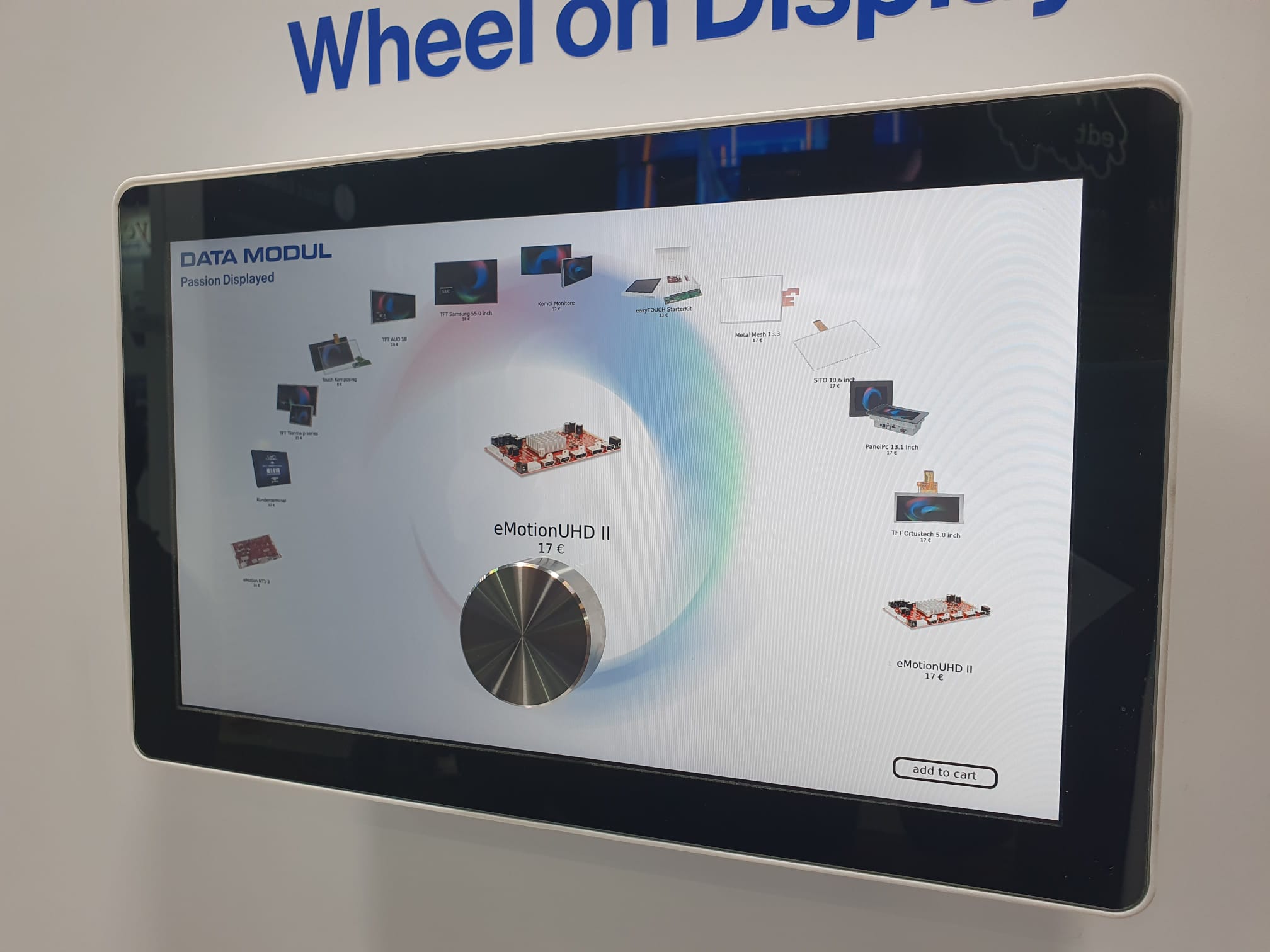
Want more? Read through our notes:



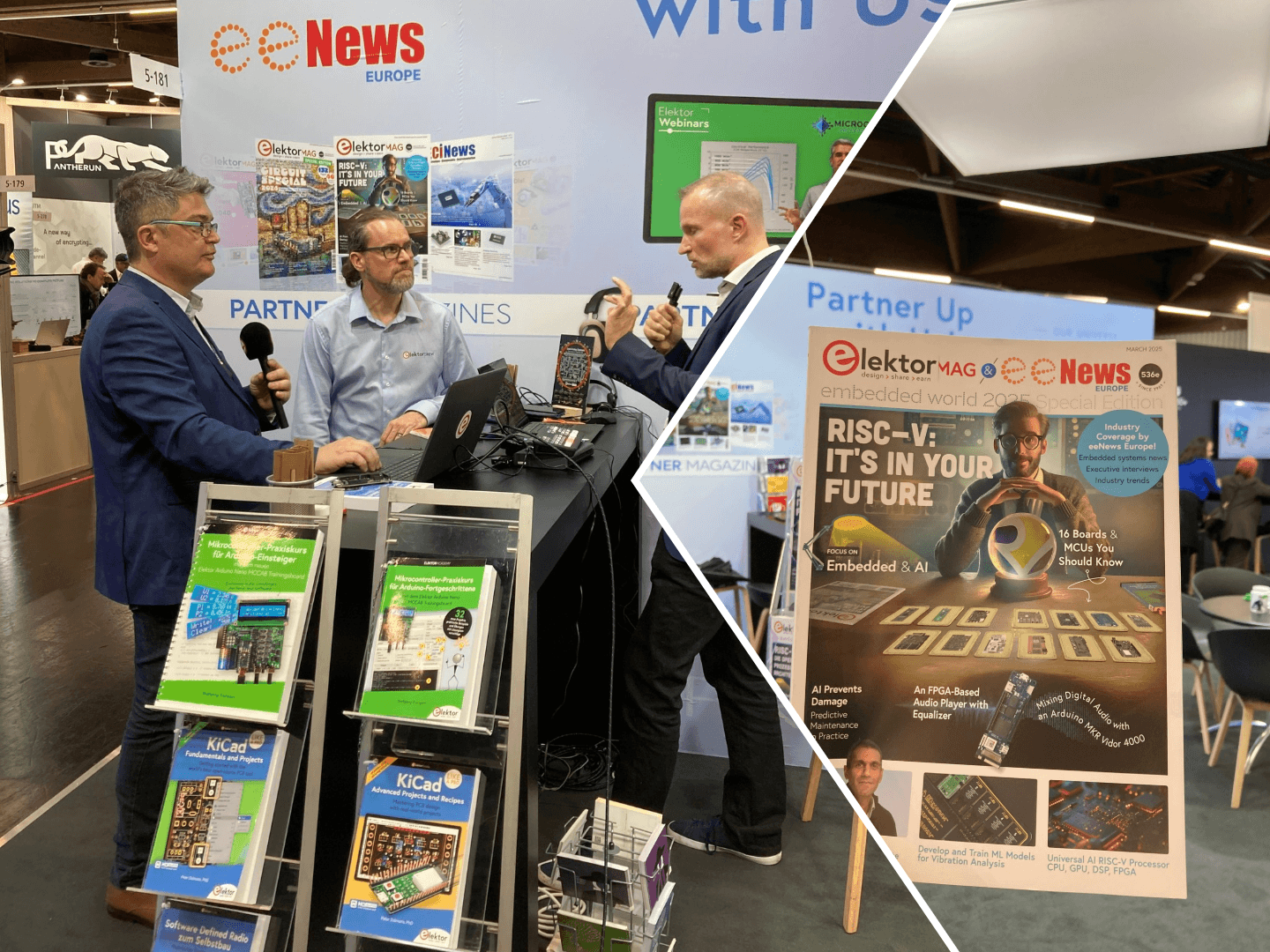
Discussion (0 comments)